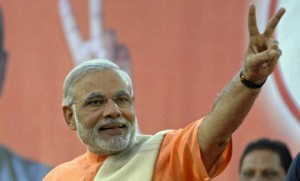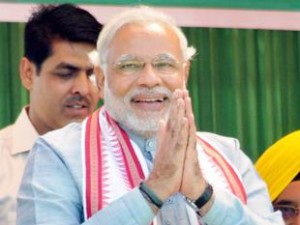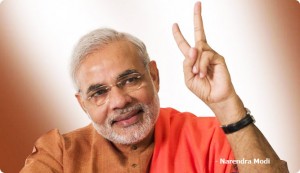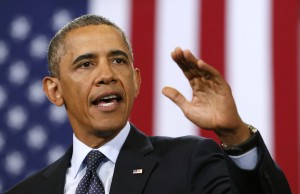The ones who framed India’s Constitution adopted the system of democracy, with a government “of the people, by the people, for the people” which they believed would ensure for them equality and safety. Elections form an integral part of a democracy and they have been held roughly every five years in the States and at the Center, and the Election Commission has more or less fulfilled its roles commendably.
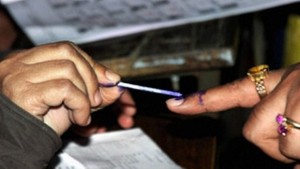 Since the start of elections, our politicians have been signaling issues of caste, community, religion, language and region to get one up against their opponents. Fifty years ago, the seeds of divide first took shape when based on the language criteria Andhra Pradesh was formed by removing eight Telugu-speaking districts from the Madras Presidency. Subsequently, smaller states such as Uttarakhand and Jharkhand were formed, and as we all know Andhra is set to witness a further divide and Telangana is about to be formed. Persistent demands for the formation of Gorkhaland, Bodoland and Vidarbha have been going on for quite some time now. But the basic claim that small states can provide good governance is questionable.
Since the start of elections, our politicians have been signaling issues of caste, community, religion, language and region to get one up against their opponents. Fifty years ago, the seeds of divide first took shape when based on the language criteria Andhra Pradesh was formed by removing eight Telugu-speaking districts from the Madras Presidency. Subsequently, smaller states such as Uttarakhand and Jharkhand were formed, and as we all know Andhra is set to witness a further divide and Telangana is about to be formed. Persistent demands for the formation of Gorkhaland, Bodoland and Vidarbha have been going on for quite some time now. But the basic claim that small states can provide good governance is questionable.
Based on different parameters, whether it be educational, job and other entitlements have been granted to scheduled caste and scheduled tribe populations, OBCs and minorities. It would not be wrong to say they are a privileged lot. Muslims, who total about 170 million, are considered a minority and are eligible for concessions, which among others include a particular financial assistance to undertake a pilgrimage to Mecca. Christians receive pilgrimage assistance (in Tamil Nadu). Jains are the latest ones to join the minority list, and get OBC quota. Jats are given concessions by one State; several other communities are demanding similar status and concessions. Since the Constitution has declared all Indian citizens as equal, why cannot the eligibility criteria for financial assistance, reservation and so on be based on levels of poverty? The only exception if there has to be one perhaps should apply to the tribal community.
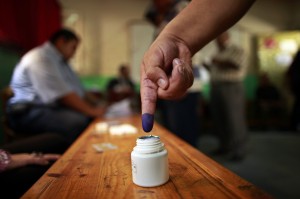 Ahead of the elections, certain groups are demanding humungous concessions and baffling favors based on caste, community and so on. That’s not all as some political parties seem to identify candidates for elections based on similar lines. Nobody asks: “Are we not Indians?” Born in one country, are we not Indians? Yes, but does the voter populations feel and act primarily as being ‘Indian First’, or do they act as members of a certain caste, religion, community or language? Before casting their vote, does he or she assess candidates with regard to integrity, social welfare consciousness, ability to express their views etc? There is scope to exercise this right, and the Election Commission has given the voter the option of NOTA, or ‘none of the above’.
Ahead of the elections, certain groups are demanding humungous concessions and baffling favors based on caste, community and so on. That’s not all as some political parties seem to identify candidates for elections based on similar lines. Nobody asks: “Are we not Indians?” Born in one country, are we not Indians? Yes, but does the voter populations feel and act primarily as being ‘Indian First’, or do they act as members of a certain caste, religion, community or language? Before casting their vote, does he or she assess candidates with regard to integrity, social welfare consciousness, ability to express their views etc? There is scope to exercise this right, and the Election Commission has given the voter the option of NOTA, or ‘none of the above’.
In a general election, votes are divided among candidates in a certain ratio. In some situations, the gap between the top two is not very substantial. When compared to the total number of votes polled, the top-scorer barely scores 30 per cent and still manages to win. How can such a person claim to represent all voters? Hence the voter gets the Parliament and government he deserves. The performance of Parliament has steadily deteriorated over the years. Several of the elected members face criminal charges and many have a record of poor attendance in the house.
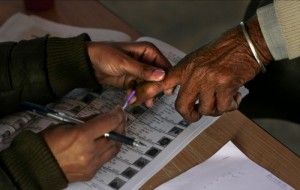 We all know that no party will get a majority. Hence, to form a government, the BJP — if it wins more seats than the Congress — will have to get support from regional parties. If the BJP forms an alliance and is able to form a government, it cannot be free from pulls and pressures. Effective governance will remain a pipe dream then. Will not the nation suffer because of this?
We all know that no party will get a majority. Hence, to form a government, the BJP — if it wins more seats than the Congress — will have to get support from regional parties. If the BJP forms an alliance and is able to form a government, it cannot be free from pulls and pressures. Effective governance will remain a pipe dream then. Will not the nation suffer because of this?
For once taking into account the interest of the nation and the need for effective governance by a stable government, why can’t leaders of the two major national parties, the Congress and the BJP, forgo ego, end slogan-shouting, and at least try to come to an ethical understanding? A committee consisting of, say, three from each party can meet and discuss the issue. If the BJP gets the larger share of seats but not the majority, the committee can then decide that the BJP would form the Central government and the Congress would support it, subject to all major policies and matters requiring legislation should be discussed by the committee. If there is no agreement on this, then the subject should be placed before Parliament and debated. Only if the vote is in favor, the government should go ahead. The Congress can express its objections during voting, but it will continue to support the government come what may.
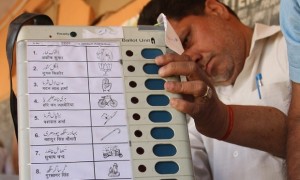 Such a system will help enable the Central government to implement measures which will improve security, the economic situation and so on, and will act as an eye-opener to all democratic countries. The credit for success will not be attributed to the BJP alone but also to the Congress. Both parties strongly believe in the welfare of the nation and therefore senior members of both parties can be expected to ensure that there is no rupture in their understanding or in the functioning of the government.
Such a system will help enable the Central government to implement measures which will improve security, the economic situation and so on, and will act as an eye-opener to all democratic countries. The credit for success will not be attributed to the BJP alone but also to the Congress. Both parties strongly believe in the welfare of the nation and therefore senior members of both parties can be expected to ensure that there is no rupture in their understanding or in the functioning of the government.
Such an arrangement should not be limited only to the government which is set to be formed after the 2014 elections. When the elections are held again after five years and if neither party gets a majority then it should be agreed upon that the Congress would form the government with the BJP supporting it and conducting itself as the Congress did for the last five years. Thus, this kind of understanding can be expected to strengthen the national parties based on ideology and provide all round security and welfare to the people.
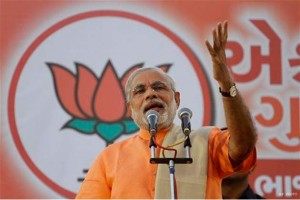 His speech last year on Independence Day had begun from a college in Bhuj and had started about half an hour after Manmohan Singh’s speech had finished. Modi had then torn into Dr. Singh’s speech branding it uninspiring and disappointing. The bigwigs at BJP had then proclaimed that Mr. Modi’s next Independence Day speech would be at Delhi’s Red Fort. In fact so fond a wish was it that in election-bound Chhattisgarh in September last year, the BJP erected a replica of the Red Fort as a stage for a Modi rally.
His speech last year on Independence Day had begun from a college in Bhuj and had started about half an hour after Manmohan Singh’s speech had finished. Modi had then torn into Dr. Singh’s speech branding it uninspiring and disappointing. The bigwigs at BJP had then proclaimed that Mr. Modi’s next Independence Day speech would be at Delhi’s Red Fort. In fact so fond a wish was it that in election-bound Chhattisgarh in September last year, the BJP erected a replica of the Red Fort as a stage for a Modi rally.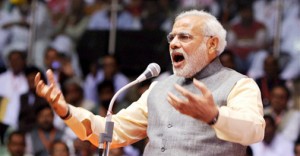 True to Modi’s focus on skill development, the government has completely dedicated one of the six areas on the recently launched web portal MyGov to it. The purpose is to develop bold ideas, concrete policies, initiatives and interventions to help develop employable skills on a mass scale to meet the needs of the industry and help youth enter the job market.
True to Modi’s focus on skill development, the government has completely dedicated one of the six areas on the recently launched web portal MyGov to it. The purpose is to develop bold ideas, concrete policies, initiatives and interventions to help develop employable skills on a mass scale to meet the needs of the industry and help youth enter the job market.
